Youngwood Historical and Railroad Museum [PA]
The Youngwood Historical and Railroad Museum is a railway history museum housed within a restored Pennsylvania Railroad station. Sights include a working model train system.
The museum offers exhibits.
The Youngwood Historical and Railroad Museum is a railway history museum housed within a restored Pennsylvania Railroad station. Sights include a working model train system.
The museum offers exhibits.
"The purpose of the Museum of Bus Transportation organization is to provide museum-quality displays of the bus industry for the public to showcase the industry's growth and development in the United States and to celebrate the role that the bus industry continues to play in the mobility and progress of the American public. This museum will promote the bus industry, and will seek to be of continuous interest to both the general public and the bus enthusiast."
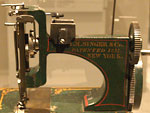
Ever tried teaching with technology? No, we don't mean Twitter, Facebook, iPods, cutting-edge interactive whiteboards, or even video and DVD players.
We mean patents.
The U.S. Patents and Trademark Office and Google Patents stockpile millions of patents, dating from 1790 to the present. In a July 2010 Organization for American Historians article, Chemical Heritage Foundation fellow Cai Guise-Richardson suggests ways to mine these historical document collections for classroom use.
Maybe you're studying Eli Whitney's cotton gin. What did the original patent look like? Can students decipher what the device does and how it works from the diagrams alone, or is it unclear? What sort of language does Whitney use to describe his invention, and how does he think it will help society?
Ask your students to think about the technology they encounter every day. Do laptops, MP3 players, cars, phones, household appliances—even toys—ever stop changing? No—there's always a new model or a different brand to buy. Inventions in the past developed in the same way. Try a Google Patent search for "cotton gin" to discover just how many variations and improvements on Whitney's invention eager inventors have developed since 1794, when Whitney first patented his design.
Try an advanced search using a word and a date. In 1901, were there any patents containing the word "genetics?" Probably not. What about in 1954, the year after scientists Watson, Crick, and Franklin discovered the structure of DNA? How about in 1990?
Think of other terms that might show up frequently in patents in different time periods. Is "bomb shelter" more frequent after World War II? How were radioactive substances used before they were proved dangerous? Consider this 1925 patent suggesting that rendering food and water radioactive will help prevent disease and preserve freshness. Do students think we're using any inventions today that we'll wish we hadn't in the future? What sorts of words and phrases do they think would show up frequently in patents today?
Pick a phrase or an invention and start exploring! Refer to Guise-Richardson's article for more suggestions if you have difficulty searching or run dry of ideas.
What did Colonial America and Medieval Europe have in common? The website Building Community: Medieval Technology and American History, developed at the University of Pennsylvania through a grant from the National Endowment for the Humanities, demonstrates that colonial technology was a transplantation of Old World ways of doing and making to a new continent.
Building Community, funded through the We the People initiative of the National Endowment for the Humanities, is designed for grade 612 classrooms. The site incorporates textual and visual materials, including a film on a Viking Age iron smelt, projects such as building a functioning clay bread oven in two sizes, a wealth of pictures from English and Colonial American historical sites, and original documents. Textual materials include short essays called "one-minute essays" and in-depth articles to give the teacher more background. All material is marked with icons indicating subject matter, as well as presence of original documents and lesson plans.
Through a concentration on flour milling and iron manufacture, students and teachers can glimpse early industrial processes while learning how experiences varied from north to south, from rural to urban areas in response to multinational, geographical, and environmental variables across the colonies. The in-depth essays for teachers offer suggestions for exercises that help define these differences. For example, the in-depth article America: The Land of Opportunity: Manufacturing in Colonial Pennsylvania: Bethlehem looks at the Moravian community of Bethlehem, PA. Materials and suggested lessons encourage upper elementary and middle school students to think about the social, agricultural, industrial, and religious inner-relationships necessary to build a strong community and provide background essays, activities, suggested discussion points, resources, and ideas for applying materials to state standards.
How did the rise of the automobile affect U.S. economics, culture, and society?
Textbooks assemble three main narratives in automobile history: Henry Ford and the Ford Motor Company, the rise of modern industry, and the rise of leisure culture.
In primary sources, the automobile stands at the center of shifts in American definitions of work and the "good life."
The textbook portrait misses the critical economic, social, and cultural importance of the automobile age, and the complexity of the automobile's development and impact on American life.
The car is something that all students recognize and, in all likelihood, use every day. Considering the many aspects of the automobile and auto use can spur them to think about the fundamental changes that accompanied America's entry into the 20th century and our continued development today. Explore three main textbook narratives and other ways of examining the complex history of automobiles in America.
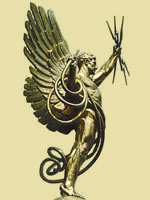
How did innovation and technology change life in the 19th century?
There were two technological innovations that profoundly changed daily life in the 19th century. They were both “motive powers”: steam and electricity. According to some, the development and application of steam engines and electricity to various tasks such as transportation and the telegraph, affected human life by increasing and multiplying the mechanical power of human or animal strength or the power of simple tools.
Those who lived through these technological changes, felt them to be much more than technological innovations. To them, these technologies seemed to erase the primeval boundaries of human experience, and to usher in a kind of Millennial era, a New Age, in which humankind had definitively broken its chains and was able, as it became proverbial to say, to “annihilate time and space.” Even the most important inventions of the 19th century that were not simply applications of steam or electrical power, such as the recording technologies of the photograph and the phonograph, contributed to this because they made the past available to the present and the present to the future.
The 1850 song, “Uncle Sam’s Farm,” written by Jesse Hutchinson, Jr., of the Hutchinson Family Singers, captured this sense that a unique historical rupture had occurred as a result of scientific and social progress:
Our fathers gave us liberty, but little did they dream
The grand results that pour along this mighty age of steam;
For our mountains, lakes and rivers are all a blaze of fire,
And we send our news by lightning on the telegraphic wires.
Apart from the technological inventions themselves, daily life in the 19th century was profoundly changed by the innovation of reorganizing work as a mechanical process, with humans as part of that process. This meant, in part, dividing up the work involved in manufacturing so that each single workman performed only one stage in the manufacturing process, which was previously broken into sequential parts. Before, individual workers typically guided the entire process of manufacturing from start to finish.
This change in work was the division or specialization of labor, and this “rationalization” (as it was conceived to be) of the manufacturing process occurred in many industries before and even quite apart from the introduction of new and more powerful machines into the process. This was an essential element of the industrialization that advanced throughout the 19th century. It made possible the mass production of goods, but it also required the tight reorganization of workers into a “workforce” that could be orchestrated in various ways in order to increase manufacturing efficiency. Individuals experienced this reorganization as conflict: From the viewpoint of individual workers, it was felt as bringing good and bad changes to their daily lives.
On the one hand, it threatened the integrity of the family because people were drawn away from home to work in factories and in dense urban areas. It threatened their individual autonomy because they were no longer masters of the work of their hands, but rather more like cogs in a large machine performing a limited set of functions, and not responsible for the whole.
On the other hand, it made it possible for more and more people to enjoy goods that only the wealthy would have been able to afford in earlier times or goods that had never been available to anyone no matter how wealthy. The rationalization of the manufacturing process broadened their experiences through varied work, travel, and education that would have been impossible before.
J. D. Bernal, Science and Industry in the Nineteenth Century. Bloomington: Indiana University Press, 1970. First edition published 1953.
Thomas Parke Hughes, American Genesis: A History of the American Genius for Invention. New York: Penguin Books, 1989.
Jack Larkin, The Reshaping of Everyday Life: 1790-1840. New York: Harper Perennial, 1989. First edition published 1988.
Walter Licht, Industrializing America: The Nineteenth Century. Baltimore: Johns Hopkins University Press, 1995.
Carroll Pursell, The Machine in America: A Social History of Technology. Baltimore: Johns Hopkins University Press, 1995.
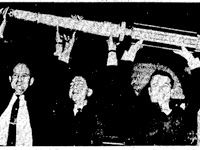
On October 4, 1957, the Soviet Union launched the satellite Sputnik, effectively beginning the "space race" with the U.S. that would last throughout the Cold War. Sputnik followed more than 25 years of research by scientists interested in rocket propulsion. This extensive archive presents more than 50,000 scanned newspaper pages, shedding light on virtually all aspects of the space program from 1930 through 2009. A good place to begin is the website's "Timeline" section, which highlights prominent events in the history of space discovery, such as the Guggenheim Foundation's decision in 1935 to support Dr. Robert H. Goddard's research into self-propelled rockets, and the launch of the Challenger in 1985 which made Sally Ride America's first woman in space. It also provides links to newspaper articles. An "Advanced Search" features allows users to input specific search terms and dates and retrieve newspaper pages—primarily from newspapers published in smaller and medium-sized cities in the south, mid-west, and California (Fresno, Jefferson City, Tuscon, Danville, VA) covering those events. The archive's decision to provide full scanned newspaper pages (as opposed to transcribed articles) allows users to better historically contextualize these events with other prominent contemporaneous events.
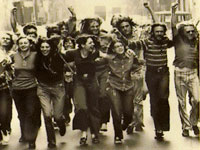
A collection of 17 oral histories conducted by secondary students focusing on topics relating to "The American Century": World War II; the Cold War; Vietnam; the "rights revolution"; immigration; education; and science and technology. Each oral history entry contains a biography of the interviewee, historical contextualization and evaluation essays, and bibliography.
The site provides tools for teachers to use in designing oral history courses: release form for interviewees, pre-interview worksheet, "do's and don'ts," guidelines for transcribing and editing interviews, how to analyze the historical value of an interview, grading rubrics, and student feedback. Also offers a 36-title bibliography, including 24 links to related sites. Of interest to teachers preparing oral history courses and for those studying selected 20th-century American history topics.
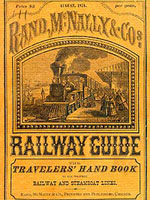
On May 10, 1869, in Promontory Summit, UT, a rail line from Sacramento, CA met with another line from Omaha, NE. When the last spike was driven, the Central Pacific became the first transcontinental railroad. This site provides a vast collection of online materials documenting the history of the Central Pacific Railroad and rail travel in general, as well as material on the history of photography. The site boasts more than 2,000 photographs and images, including stereographs by Alfred Hart and Eadweard Muybridge; engravings and illustrations from magazines, travel brochures, and journals; and more than 400 railroad and travel maps. Also included are more than 60 links to images and transcriptions of primary documents dealing with the construction and operation of the railroad, including government reports, travel accounts and diaries, magazine and journal articles, travel guides, and railroad schedules.
A separate section documents the Chinese-American contribution to the transcontinental railroad, including four scholarly articles, two links to Harper's Weekly articles and illustrations about Chinese workers, a bibliography of 15 scholarly works, and links to more than 20 related websites. Timelines on the building of the transcontinental railroad from 1838 to 1869, the history of photography from 1826 to 1992, and the development of the railroad from 1630 to 1986 also help to contextualize the history of the railroad in America. The volume of information on the home pages make this site slow loading, unwieldy, and confusing to navigate, and there are no descriptive captions or other information on most of the images. But the site is keyword searchable, and for those interested in the history of railroads, this site is certainly worth the time.
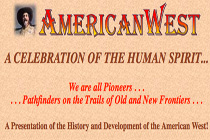
Created by a Western history enthusiast and Swedish immigrant, this gateway provides more than 500 links to educational and commercial sites related to Western history. Topics include westward expansion, western trails, Native Americans, European immigration, women of the west, gold and silver mining, railroads, outlaws, cowboys, Roy Rogers, Buffalo Bill, and "anything of interest or of significance west of the Mississippi River." In addition, visitors can post their stories, reviews, and comments about Western history.
Created to celebrate the American West, this site lacks categories explicitly relevant to issues of conquest and colonization; however, its extensive collection of links is indispensable for students, teachers, and researchers.